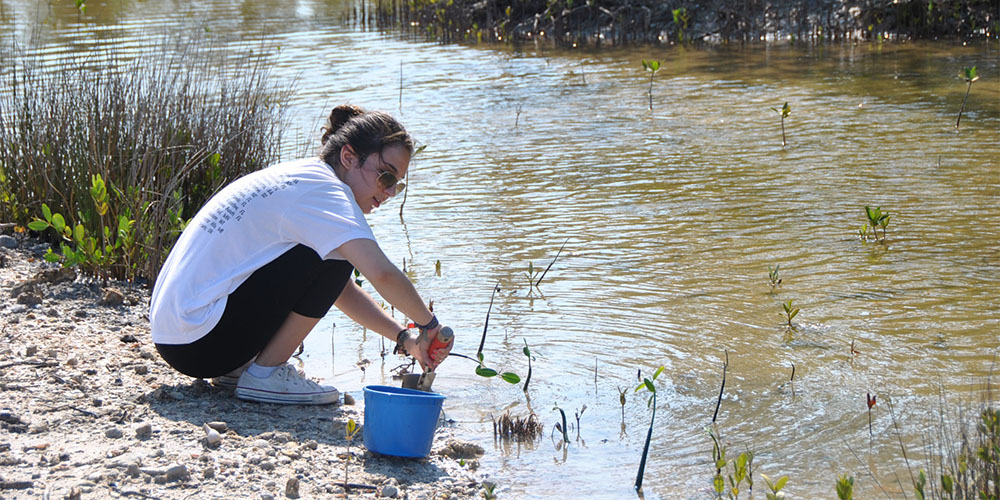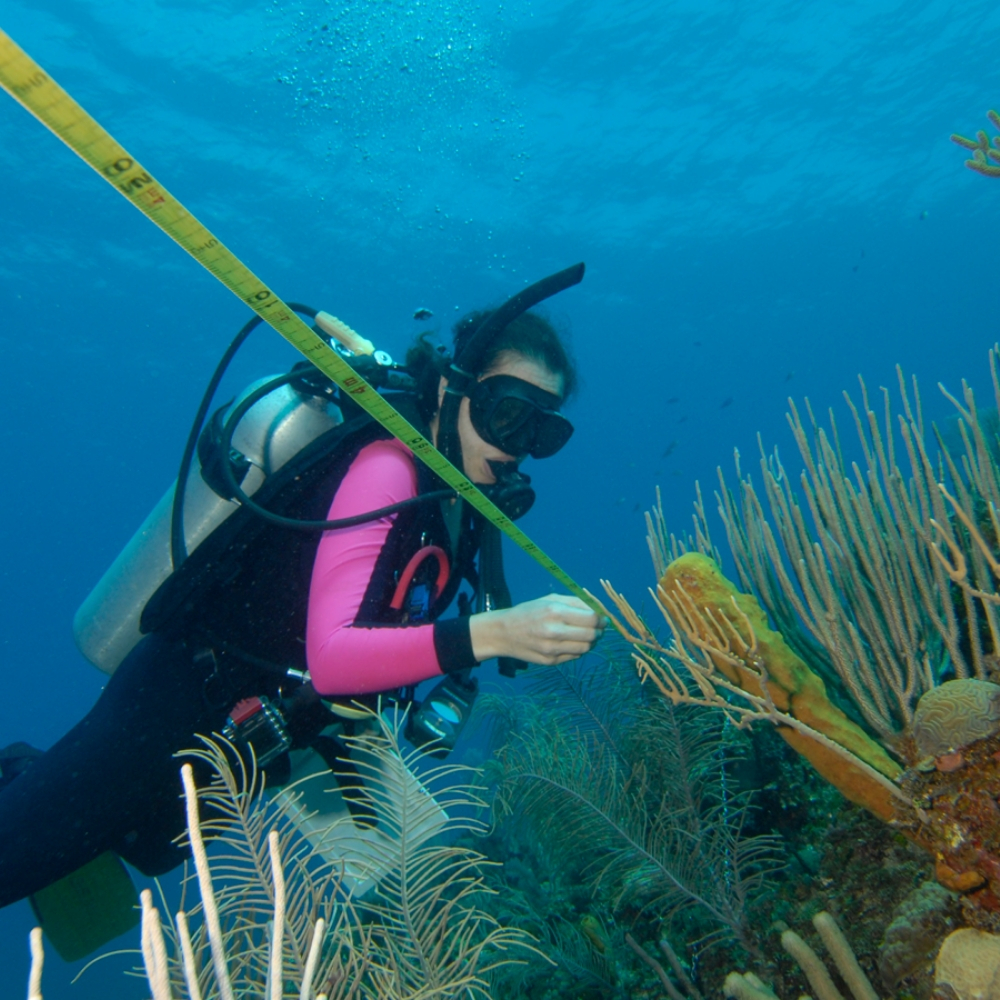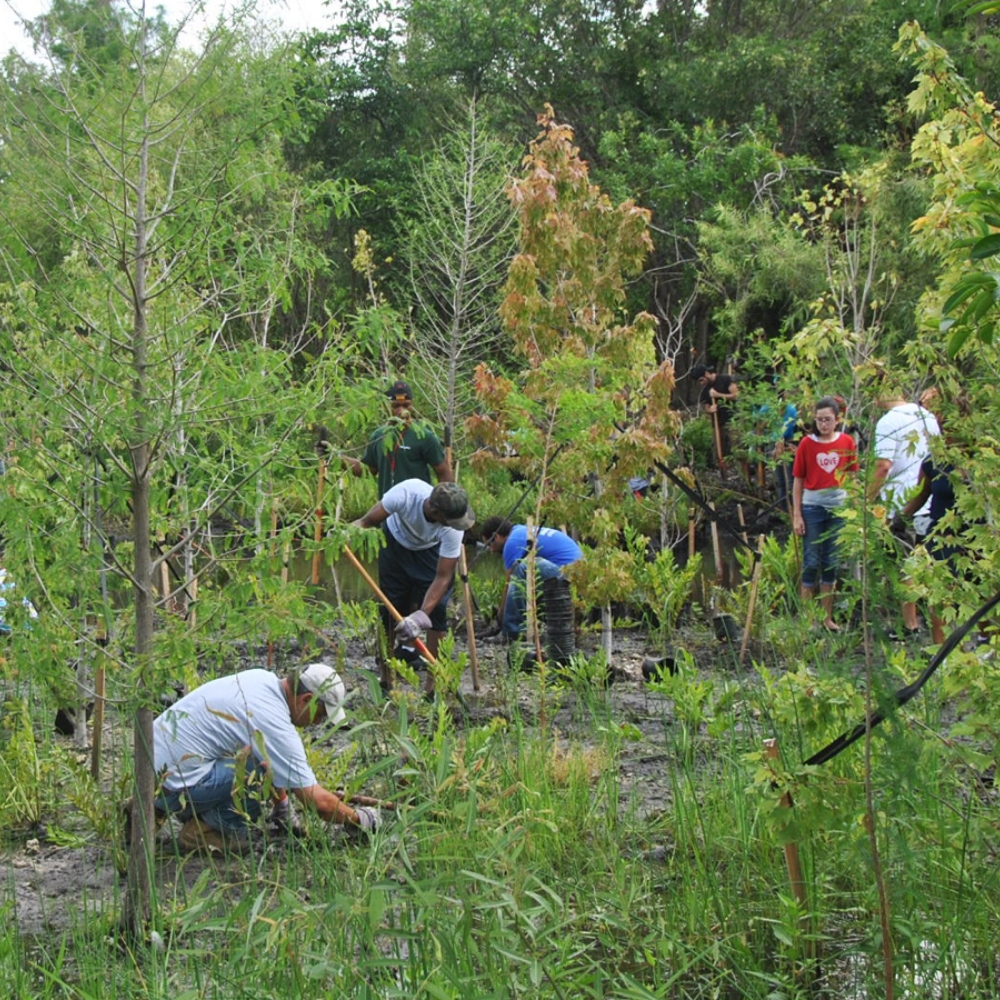
Coastal habitats are critically important to South Florida, offering us both ecological and economic benefits. Barrier islands such as Key Biscayne and Virginia Key are especially important because of the biodiversity they sustain. On land, they provide food and shelter for many native birds, mammals and reptiles. Underwater, they support nurseries for marine organisms such as fish and lobster. The dense mangrove forests and coral reefs found in and near these habitats also buffer our coastlines from storms, cleanse our air, and filter our water, which in turn supports greater sea life. Despite their many benefits to our urban area, coastal habitats are under constant threat from urban growth.

Coral Reefs
Often referred to as the “rainforests of the sea,” coral reefs offer greater biodiversity than any other marine ecosystem. Though they cover less than one percent of the ocean floor, nearly 25 percent of all ocean species depend on reefs for food and shelter. Coral reefs are also very important to people, providing us with food, shoreline protection from storm surge, attractions for tourism, and even some medicines. Humans pose the greatest threat to coral reefs. Agricultural runoff rich in nutrients like nitrogen and phosphorous fuels algae blooms that can harm reefs. Overfishing and the introduction of invasive fish species are significant threats as well, disrupting the ecological balance that delicate corals depend upon.

Mangroves
Mangroves are fascinating plants characterized by their complex root systems that can tolerate saline conditions that would harm other plants. Partially rooted on land and partially growing in water, mangroves provide habitat for a range of different native species, and hold land in place that would otherwise be washed away by ocean currents. Birds roost in their branches and baby fish seek refuge among the dense roots systems, maturing before they venture out into the ocean. Despite their importance, mangroves are under threat worldwide. Land development often leads to the removal and destruction of mangroves, which sometimes block water views, or simply stand in the way of construction plans. Other threats include oil spills, chemical pollutants and aquaculture.

Coastal Forests
Among the most productive and biodiverse ecosystems on Earth, coastal forests sit within 62 miles of the coast, and are often positioned along critical pathways for migratory birds. Mangrove forest and the less common tropical hardwood hammock are two habitats that form near Florida’s coasts. The plants that grow in these habitats typically share features adapted to salt spray exposure, certain soil types and strong winds or other disturbances. Coastal forests are at risk from sea level rise due to rising temperatures. Although more salt-tolerant than most plants, the vegetation found in coastal forests will perish if submerged.

Beaches
Although often associated with surfing or building sand castles, beaches are dynamic ecosystems that support many species of native wildlife. They are home to fish, grasses, crabs, clams, tiny invertebrates, gulls and other seabirds. They also provide areas for sea turtles and crocodiles to lay their eggs. Unfortunately, beaches are experiencing an unprecedented level of human impact. Coastal development is encroaching on one side while sea level rise threatens the other. Additionally, litter such as fishing line, plastic bags and six-pack holders can injure animals, or harm them if they mistake marine debris for food.